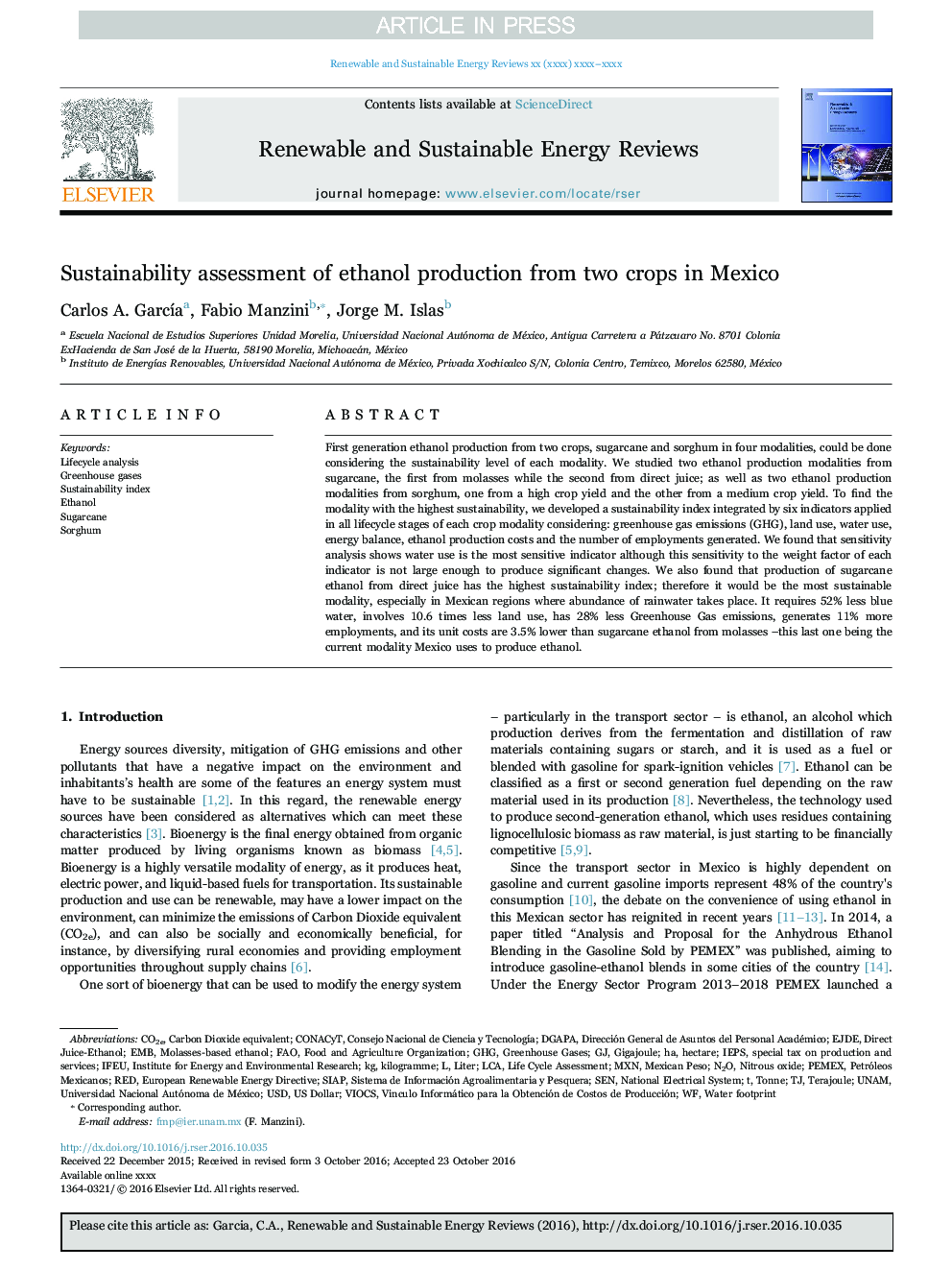| Article ID | Journal | Published Year | Pages | File Type |
|---|---|---|---|---|
| 5482434 | Renewable and Sustainable Energy Reviews | 2017 | 9 Pages |
Abstract
First generation ethanol production from two crops, sugarcane and sorghum in four modalities, could be done considering the sustainability level of each modality. We studied two ethanol production modalities from sugarcane, the first from molasses while the second from direct juice; as well as two ethanol production modalities from sorghum, one from a high crop yield and the other from a medium crop yield. To find the modality with the highest sustainability, we developed a sustainability index integrated by six indicators applied in all lifecycle stages of each crop modality considering: greenhouse gas emissions (GHG), land use, water use, energy balance, ethanol production costs and the number of employments generated. We found that sensitivity analysis shows water use is the most sensitive indicator although this sensitivity to the weight factor of each indicator is not large enough to produce significant changes. We also found that production of sugarcane ethanol from direct juice has the highest sustainability index; therefore it would be the most sustainable modality, especially in Mexican regions where abundance of rainwater takes place. It requires 52% less blue water, involves 10.6 times less land use, has 28% less Greenhouse Gas emissions, generates 11% more employments, and its unit costs are 3.5% lower than sugarcane ethanol from molasses -this last one being the current modality Mexico uses to produce ethanol.
Keywords
Related Topics
Physical Sciences and Engineering
Energy
Renewable Energy, Sustainability and the Environment
Authors
Carlos A. GarcÃa, Fabio Manzini, Jorge M. Islas,
